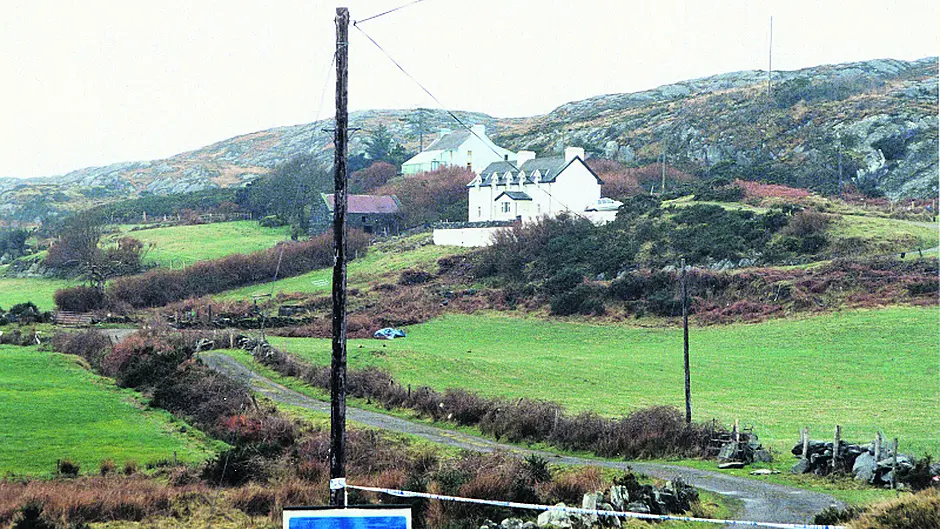Exactly 20 years after the death of film producer Sophie Toscan du Plantier, the murder remains unsolved. The Southern Star reviews the timeline of a tragedy that still has the nation gripped
1991: The English journalist, Ian Bailey, moves to West Cork, where he meets and sets up home with the artist, Jules Thomas.
1993: The French film producer, Sophie Toscan du Plantier buys a holiday home, a retreat, at Toormore, near Schull.
1995: Chris and Marie Farrell move to Schull from Glanmire near Cork, and open a craft shop and ice cream parlour.
1996, December 20th: Sophie Toscan du Plantier flies from Paris to Cork to visit her cottage on her own.
1996, December 23rd: The battered body of the 39-year old film producer is found by her neighbour at the end of the lane leading to her home and an investigation under Supt JP Twomey of Bantry Garda Station commences.
1996, December 24th: The State pathologist takes 24 hours to arrive, which means the time of death cannot be established. The murder weapon – a brick – is found by Sophie’s body but it offers no forensic evidence.
1997, January 11th: Marie Farrell, using the name ‘Fiona’, makes the first of several calls to the garda station claiming she saw a man by Kealfadda Bridge around 3am on the night that Sophie Toscan du Plantier was murdered.
1997, January 24th: Marie Farrell makes a third phone call to the gardaí declining to attend Bandon Garda Station, but the gardaí trace the call to her home in Schull.
1997, February 4th: A local schoolboy, Malachi Reid, claims that Ian Bailey told him that he had killed Sophie Toscan du Plantier.
1997, February 10th: Six days later, Ian Bailey is arrested for the murder and taken to Bandon Garda Station, but is released without charge. His partner, Jules Thomas, is also arrested but she, too, is released without charge.
1997, April 17th: At an inquest, Dr John Harbison, the then State pathologist, says Sophie Toscan du Plantier died from multiple injuries, including laceration of the brain and a fracture of the skull, caused by a blunt instrument.
1997, September 29th: State Solicitor Malachy Boohig sends a 2,000-page file on the murder to the DPP, but no charges are brought.
1997, December: In the Dáil, the Minister for Justice John O’Donoghue confirms that the French authorities have requested assistance in the case, but it was declined on the basis that it might prejudice the garda investigation.
1998, January 27th: Ian Bailey is arrested again and released again without charge.
2000, September 22nd: Jules Thomas is arrested a second time but is released without charge.
2001, August 18th: For an assault on Jules Thomas at their home, Ian Bailey receives a three-month suspended sentence at Skibbereen District Court.
2001, November: Robert Sheehan, a solicitor at the DPP’s office, writes a critical analysis of the Garda evidence in the case and concludes that the evidence did not warrant a prosecution.
2002, January: Commissioner Pat Byrne appoints a review team under Chief Supt Austin McNally to examine the Garda investigation.
2002, December 19th: Sophie Toscan du Plantier’s parents and her son initiate a civil action against Ian Bailey for her wrongful death.
2003, March: A new file is submitted to the DPP but the Director of Public Prosecutions declines to issues charges on the grounds of lack of evidence.
2003, December: Ian Bailey sues eight newspapers. He loses six of the eight cases but succeeds in his action against two of the papers.
2005: April: Marie Farrell alleges that the gardaí coerced her into making the statement, claiming she saw Ian Bailey at Kealfadda Bridge on the night Sophie was murdered.
2005, October: Frank Buttimer, Ian Bailey’s solicitor, writes to the Minister for Justice, Michael McDowell, who, in turn, asks the Garda Commissioner to conduct an investigation into the inquiry.
2006, April 25th: The family of Sophie Toscan du Plantier confirm that they have withdrawn their civil action against Ian Bailey.
2007, May: Ian Bailey commences High Court proceedings suing the Minister for Justice and the Garda Commissioner for wrongful arrest, false imprisonment, conspiracy, assault, battery, trespass to the person, harassment, intimidation and breach of his constitutional rights
2007, November: The Association for the Truth about the Murder of Sophie Toscan du Plantier (ASSOPH) is formed.
2008, June: A French magistrate orders the exhumation of Ms Toscan du Plantier’s body for a post-mortem and forensic examination.
2008, July: The DPP recommends no prosecution following the McAndrew Inquiry into the Garda handling of the murder investigation.
2009, June: A French magistrate travels to West Cork to inspect the murder scene and meets with gardaí involved in the investigation.
2009, October 19th: Members of the Garda Siochana travel to Paris where they are interviewed by Judge Gachon about the murder and the Garda investigation into the killing.
2010, February 19th: The French magistrate issues a European arrest warrant for Ian Bailey’s arrest.
2010, April 23rd: An Irish judge endorses the European arrest warrant and Ian Bailey is arrested and brought before the High Court in Dublin where he is granted bail, pending a hearing of the Extradition case.
2010, December: Ian Bailey graduates with an Honours Degree in Law from UCC. Two years later, he completes a Masters’ in Law on ‘Policing the Police - Garda Accountability in Ireland’.
2011, March 18th: The High Court rules in favour of the French authorities but the decision is appealed to the Supreme Court.
2011, October: A French investigation team travels to Ireland and interviews up to 30 witnesses.
2012, March: The Supreme Court rules in Mr Bailey’s favour in his appeal against extradition to France.
2012, March: Ian Bailey makes a complaint to Garda Síochána Ombudsman Commission about the Garda investigation.
2012, September: Lawyers for Sophie Toscan du Plantier’s family lodge a formal complaint against Ireland at the European Commission regarding the extradition of Ian Bailey.
2012, October: Ian Bailey makes a formal complaint that his phone has been illegally tapped for the past 16 years.
2013, May: The High Court orders the State to give over documents to Ian Bailey in his civil action for damages.
2014, April 8th: A former Supreme court judge is appointed to investigate the recording of calls at Bandon Garda Station.
2014, October: The High Court orders GSOC to share material it has gathered in its investigation into complaints by Mr Bailey against gardaí.
2014, November 4th: Ian Bailey takes a High Court action for damages against the Minister for Justice and the Garda Commissioner.
2015, March 30th: After 64 days of extraordinary evidence, Ian Bailey loses his civil action for damages against the Garda and the State. Much of the case is deemed to be ‘outside of the statute of limitations.’
2015, April: Ian Bailey indicates that he will appeal the High Court decision.
2016, August: A French judge says there’s enough evidence to put Bailey on trial on a charge of ‘voluntary homicide.’
A European arrest warrant is, reportedly, with the French authorities but Ian Bailey’s solicitor, Frank Buttimer, says they have had no notification of it. Mr Buttimer also claims that his client has ‘no chance’ of getting a fair trial in France and that there is no recognition in Irish law of the offence they are proposing to bring against Ian Bailey.
2016, December 23: In Paris, the family of Sophie Toscan du Plantier will gather in her memory at a private mass.









